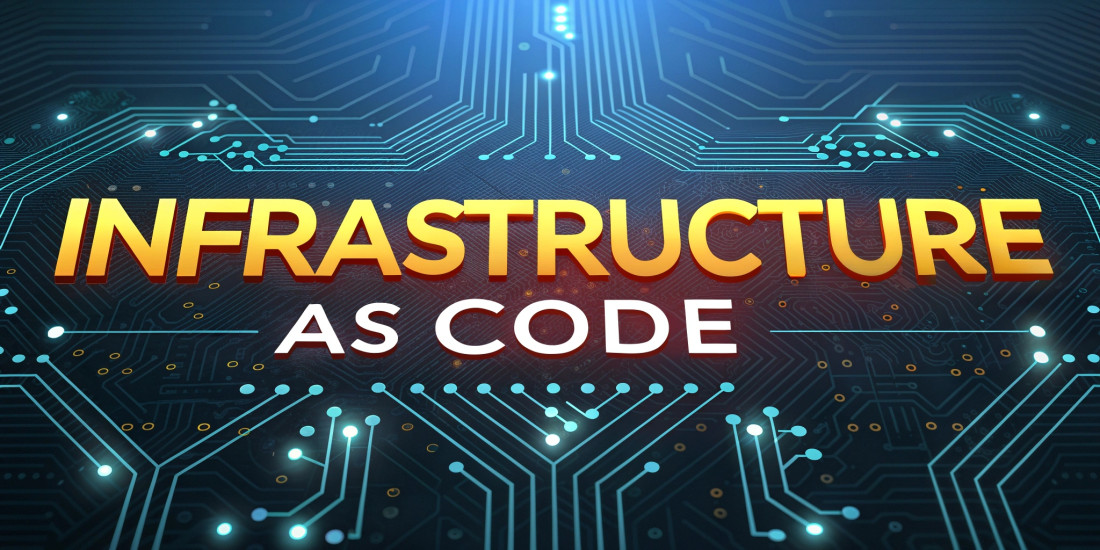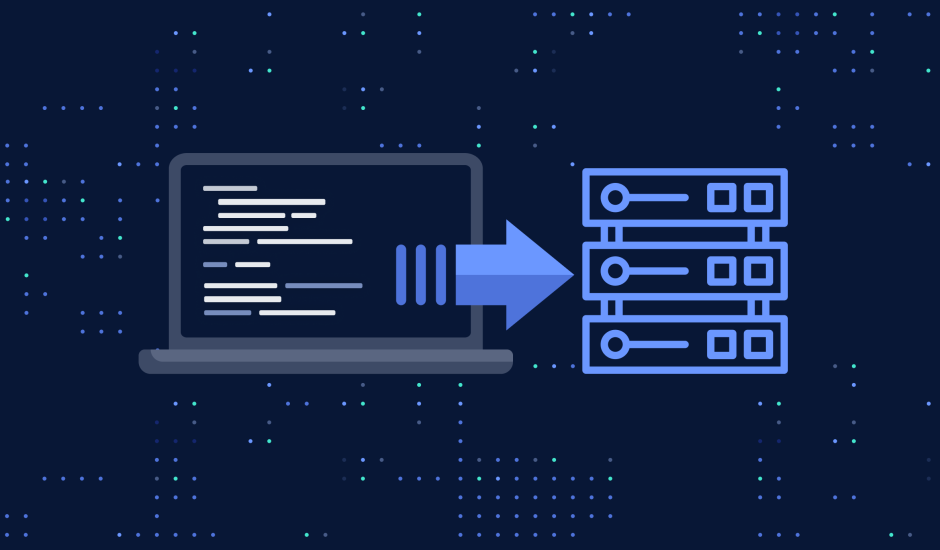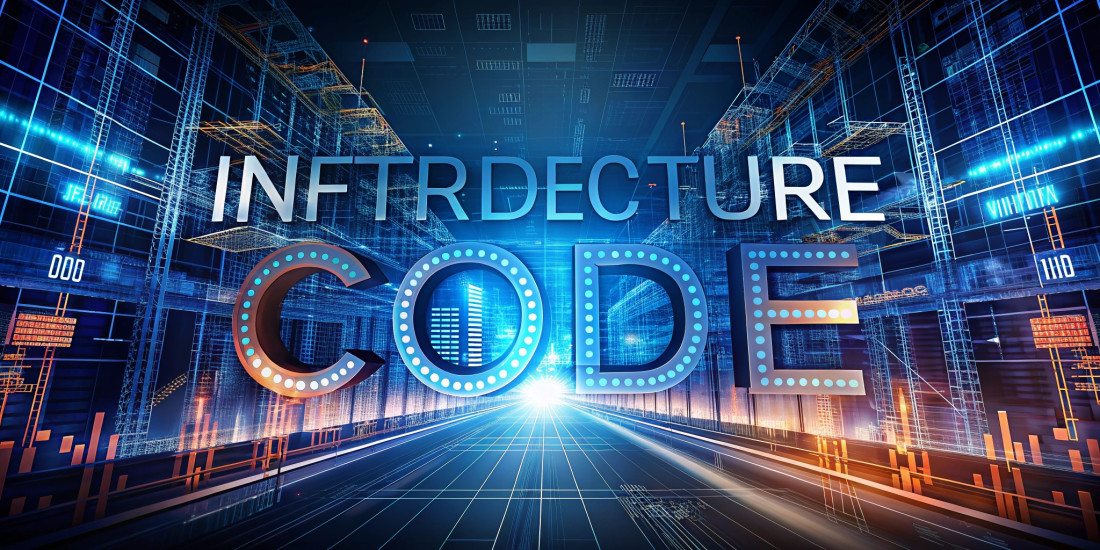Infrastructure as Code: Code, Create, Captivate
We have engineered several leading and secure apps that have allowed businesses to accelerate their growth and fully thrive. With us, you get cutting-edge development.
Get a Free Consultation
We Offer,
Infrastructure as Code
Infrastructure as Code (IaC) is a method of managing and provisioning infrastructure through machine-readable code instead of manual processes. It automates configuration, reduces human error, and ensures consistent environments across development, testing, and production. IaC helps teams deploy scalable and reliable infrastructure quickly using tools like Terraform, Ansible, or AWS CloudFormation.

Jenkins
Jenkins is an open-source automation server used for continuous integration and continuous delivery (CI/CD) to automate the building, testing, and deployment of software projects. It supports a wide range of plugins for integrating with various tools and services, enhancing its flexibility in DevOps workflows.

Powershell
PowerShell is a task automation framework and scripting language developed by Microsoft, primarily used for managing and automating administrative tasks in Windows environments. It combines the power of a command-line shell with scripting capabilities, enabling users to automate complex system management tasks and access system APIs.

Bash
Bash (Bourne Again Shell) is a command-line shell and scripting language commonly used in Unix-based systems for automating tasks and managing system processes. It is known for its simplicity, flexibility, and ability to execute commands, create scripts, and manage files and directories efficiently.

Google Cloud Platform (GCP)
Google Cloud Platform (GCP) is a suite of cloud computing services provided by Google, offering infrastructure, storage, machine learning, and data analytics tools. It enables businesses to build, deploy, and scale applications with high performance and security.

Python
Dedicated assistance whenever you need it, ensuring a smooth and hassle

GitLab CI/CD
GitLab CI/CD is a built-in continuous integration and continuous delivery feature within GitLab that automates the process of building, testing, and deploying code. It uses YAML configuration files to define pipelines, jobs, and stages, and integrates seamlessly with GitLab repositories to enable automated DevOps workflows.

Travis CI
Travis CI is a cloud-based continuous integration service that automates the building, testing, and deployment of software applications. It integrates with GitHub repositories and uses `.travis.yml` configuration files to define build pipelines, enabling seamless integration and delivery across multiple environments and programming languages.

Circle CI
CircleCI is a cloud-based continuous integration and continuous delivery platform that automates the process of building, testing, and deploying applications. It uses YAML configuration files to define workflows, integrates with various version control systems like GitHub and Bitbucket, and supports multiple programming languages and environments to enable efficient and scalable DevOps pipelines.

Terraform
Terraform is an open-source Infrastructure as Code (IaC) tool that allows users to define, provision, and manage infrastructure resources across multiple cloud providers using a declarative configuration language. It automates infrastructure management, ensures repeatability, and supports versioning for cloud environments.

Ansible
Ansible is an open-source automation tool that uses YAML-based playbooks to automate configuration management, application deployment, and system orchestration across multiple systems. It operates in an agentless manner, making it easy to manage and scale infrastructure without requiring additional software on managed nodes.

Puppet
Puppet is an open-source configuration management tool that automates the provisioning and management of infrastructure across multiple systems using its declarative language. It helps ensure consistency and compliance by defining infrastructure as code and automating system configurations.

Salt Stack
SaltStack (Salt) is an open-source configuration management and orchestration tool that automates the management of infrastructure at scale. It uses a master-agent model, with Salt’s simple YAML-based configuration files and powerful remote execution capabilities for efficient system automation.

Cloudformation
AWS CloudFormation is a service that allows users to define and provision AWS infrastructure resources using templates written in JSON or YAML. It automates the creation, update, and deletion of resources, enabling users to manage infrastructure as code and maintain consistent environments across multiple AWS accounts and regions.
About This Service
Infrastructure as Code (IaC) is a modern DevOps approach that manages and provisions infrastructure using code instead of manual setups or GUI tools. It allows teams to automate configurations, apply version control, and maintain consistency across environments. IaC speeds up deployments, reduces errors, and simplifies scaling by treating infrastructure the same way as application code, using tools like Terraform, Ansible, or AWS CloudFormation.
Key Components of Infrastructure as Code:
-
Declarative vs. Imperative Approach:
- Declarative: In this approach, you define the desired state of the infrastructure, and the IaC tool automatically makes the necessary changes to reach that state. Tools like Terraform and AWS CloudFormation follow this model.
- Imperative: This approach involves specifying step-by-step instructions to reach the desired state, often seen in tools like Ansible and Chef.
-
Configuration Files: IaC uses configuration files to define the infrastructure setup. These files describe the infrastructure resources like servers, databases, networking, and storage in a machine-readable format. Common formats include:
- YAML: Used by tools like Ansible and SaltStack.
- JSON: Used by AWS CloudFormation.
- HCL (HashiCorp Configuration Language): Used by Terraform.
-
Version Control: One of the biggest advantages of IaC is the ability to store configuration files in version control systems like Git. This allows teams to track changes, roll back to previous versions, and collaborate more effectively. By treating infrastructure as code, it’s possible to maintain consistency and traceability of changes across environments.
-
Automation: IaC enables automation of infrastructure provisioning, management, and scaling. With automated workflows, the risk of human error is reduced, and teams can deploy infrastructure faster and more reliably. This is especially valuable in environments that require frequent updates, scaling, or consistency.
-
Consistency and Repeatability: Since IaC relies on code, infrastructure can be defined in a consistent manner across various environments. Developers can ensure that the infrastructure in staging mirrors the production environment, eliminating "it works on my machine" problems. This consistency helps avoid misconfigurations and minimizes downtime.
-
Scalability: IaC makes it easy to scale infrastructure resources up or down based on demand. By simply adjusting configuration files, infrastructure can automatically scale without requiring manual intervention, making it ideal for cloud environments.
-
Infrastructure Testing: With IaC, it's easier to test infrastructure configurations in isolated environments before deployment. Tools like TestInfra and ServerSpec allow teams to test and validate infrastructure setups before making changes to live environments.

Our Process
Our experts create a full brief of your requirements and ideas. We translate these into technical documents and early-stage prototypes. We gather a team and build an initial design to lay the foundation for the entire project.

KICK-OFF STAGE
Leverage agile framework to provide a robust high level synopsys overviews

DEVELOPMENT STAGE
Bring to the table survival strategies to ensure proactive domination

SUPPORT STAGE
Grow the holistic world view of disruptive innovation workspace
Questions You May Have
DevOps is a set of practices that combines software development and IT operations to shorten the development lifecycle, increase deployment frequency, and deliver reliable software faster. It helps businesses achieve faster delivery, improved collaboration, and better system reliability.
Automation in DevOps increases efficiency, reduces manual errors, and accelerates deployment cycles, ensuring higher-quality software releases.
Yes, we provide consulting and hands-on implementation to help organizations adopt DevOps practices and tools effectively.
Yes, we integrate security practices into the DevOps lifecycle to ensure your applications are secure and compliant.
Reach & Get in Touch With Us!
We'd love to hear from you. Please fill out the form below.
Got a Project ?




Stay Updated with the Latest News and Insights
Subscribe to our newsletter for exclusive updates, expert insights on innovative solutions, the latest tech trends, industry news, and special offers from TecishSol.




